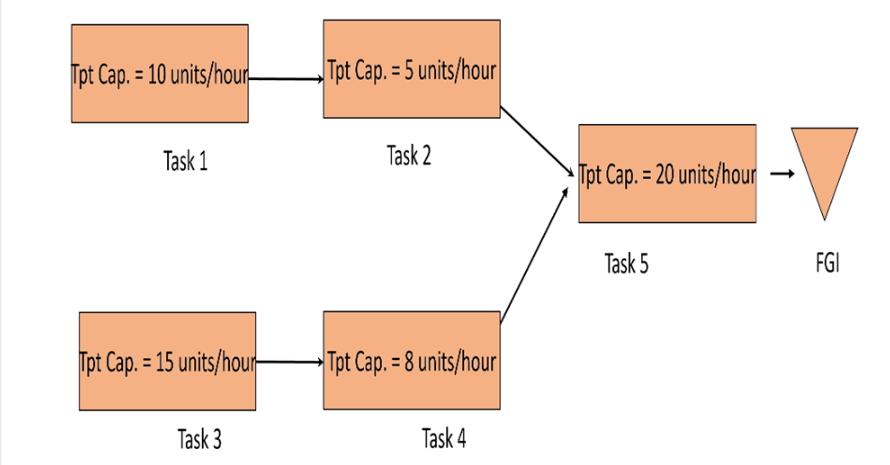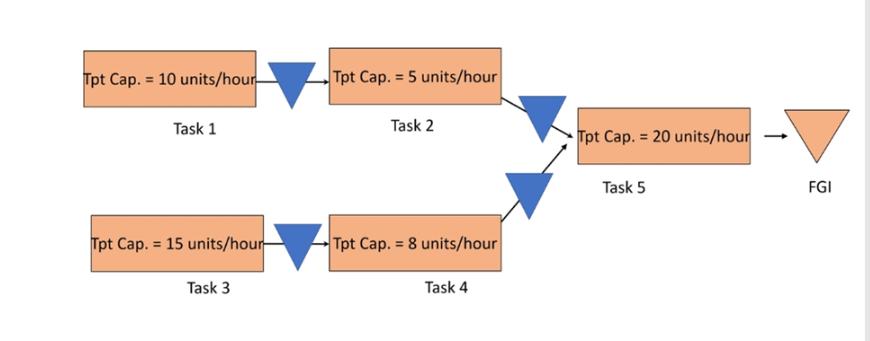Answered step by step
Verified Expert Solution
Question
1 Approved Answer
Suppose we are given the process flowchart below. There are no buffers between tasks. Task #1 and #2 produce Part A, and Task #3 and
Suppose we are given the process flowchart below. There are no buffers between tasks. Task #1 and #2 produce "Part A", and Task #3 and #4 produce "Part B"; Task #5 assembles each unit of a finished product by combining one unit of "Part A" with one unit of "Part B". Answer the next four questions:
 a) how many units would Task 5 actually produce each hour?
a) how many units would Task 5 actually produce each hour?
b) Which task(s) would be blocked?
c) What would the utilization of Task 3 be?
Suppose you are given the same as process Scenario AA, except with buffers between each of the tasks (please see below). Buffers have no limit to the number of items they can potentially hold.
Suppose each buffer shaded in blue starts with 35 units in inventory. After 3 hours, how many finished units will Task #5 have produced?

Tpt Cap.= 10 units/hour Task 1 Tpt Cap.= 15 units/hour Task 3 Tpt Cap. = 5 units/hour Task 2 Tpt Cap. = 8 units/hour Task 4 Tpt Cap. = 20 units/hour Task 5 FGI
Step by Step Solution
★★★★★
3.49 Rating (162 Votes )
There are 3 Steps involved in it
Step: 1
Answer a To determine how many units Task 5 would actually produce each hour we need to identify the ...
Get Instant Access to Expert-Tailored Solutions
See step-by-step solutions with expert insights and AI powered tools for academic success
Step: 2

Step: 3

Ace Your Homework with AI
Get the answers you need in no time with our AI-driven, step-by-step assistance
Get Started


